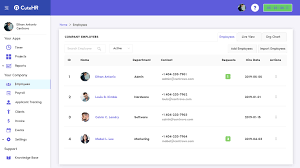Compare Vehicle Insurance Quotes Online: Find the Best Coverage & Rates Today

When you need reliable protection for your car, one smart way to save money and get peace of mind is to compare vehicle insurance. Understanding the options available helps you find the right policy and avoid overpaying. In this guide, we walk you through why it pays to compare vehicle insurance, key factors to look for, and practical tips to help you pick the best coverage.
Why You Should Compare Vehicle Insurance
-
Save on Premiums – Rates can vary widely. By taking time to compare vehicle insurance, you can find discounts and lower prices for the same level of coverage.
-
Customize Your Coverage – Policies differ in deductible options, liability limits, and add-ons like rental reimbursement or roadside assistance.
-
Get the Right Fit – Whether you’re driving a new vehicle or an old model, compare vehicle insurance to match your specific usage and mileage requirements.
-
Improve Service Experience – Some insurers offer better claims service and faster response times. Comparing providers helps you pick one with higher customer satisfaction.
-
Find Bundle Discounts – Many companies allow you to bundle auto, home, and other insurance and save. When you compare vehicle insurance, include your other policies to see if multi-policy discounts apply.
How to Compare Vehicle Insurance Effectively
Step 1: Determine Your Coverage Needs
Start by answering these questions:
-
Do you need liability only, third-party fire and theft, or comprehensive?
-
What deductible are you comfortable paying?
-
Would you like extras like personal injury protection, rental car coverage, or windshield replacement?
Once those are defined, it’s easier to compare vehicle insurance quotes on an equal footing.
Step 2: Collect Basic Information
Most insurers ask for:
-
Vehicle details (year, make, model)
-
Vehicle Identification Number (VIN) or registration
-
Driving history (accidents or citations)
-
Annual mileage and intended use
-
Current coverage for potential loyalty or drop-in discounts
Provide accurate info to ensure valid comparisons.
Step 3: Use Comparison Tools and Websites
Online comparison sites let you compare vehicle insurance quotes side by side. Provide consistent input across providers so you’re evaluating similar policies.
Step 4: Review Policy Details Closely
Don’t just look at price:
-
Check limits and exclusions
-
See if roadside assistance or towing is included
-
Confirm claim processing times
-
Evaluate provider financial strength and reputation
Step 5: Check for Discounts
When you compare vehicle insurance, remember to ask about available discounts:
-
Safe driver
-
Multiple vehicles
-
Good student
-
Defensive driving course
-
Low mileage
-
Anti-theft devices
These can reduce your premium significantly.
Step 6: Read Customer Reviews and Ratings
Beyond cost, compare customer service experience. Some insurers have higher satisfaction ratings. By reading reviews you can compare vehicle insurance providers on responsiveness and claims resolution.
Key Factors When You Compare Vehicle Insurance
1. Premium and Cost
Premiums are the most obvious difference. But a low price can hide high deductibles or limited coverage. Always compare full cost over time, not just monthly payments.
2. Coverage Options
Comprehensive coverage often includes uninsured motorist, collision, glass breakage, and rental reimbursement. If you’re trying to compare vehicle insurance, verify the exact features each policy offers.
3. Deductible Choices
Higher deductibles lower premiums but raise your out‑of‑pocket costs. When you compare vehicle insurance, balance monthly savings against potential claim costs.
4. Claims Process
Providers with online tools and quick settlement can make all the difference. When customers compare vehicle insurance, many report headaches with delays. Look for insurers with streamlined digital claims.
5. Company Reputation
Independent ratings from agencies like A.M. Best or J.D. Power help you see reliability. If you plan to compare vehicle insurance, check insurer ratings, complaint records, and customer reviews.
Types of Vehicle Insurance Compared
Here’s what commonly varies when you compare vehicle insurance:
| Insurance Type | What It Covers |
|---|---|
| Liability Only | Bodily injury & property damage to others |
| Third-Party Fire and Theft | Liability plus fire damage or vehicle theft |
| Comprehensive | Covers damage to your vehicle from accidents, weather, V&F |
| Collision Coverage | Pays for repairs or replacement after an accident |
| Uninsured/Underinsured | Protects when at‑fault driver lacks sufficient insurance |
| Personal Injury Protection | Medical expenses regardless of fault |
| Add‑ons & Optional Covers | Rental car, roadside assistance, glass coverage |
When you compare vehicle insurance, verify which levels of coverage each insurer includes.
Real Life Examples of Savings
Scenario A:
Maria currently pays $1,200/year for a standard policy. She took time to compare insurance using an online tool and the same coverage from another provider cost $980/year—saving her $220, or nearly 20%.
Scenario B:
John owns two cars and combined his home policy with one insurer. By doing so, he saved 15% on each policy. When he later decided to compare vehicle insurance for his second vehicle, bundling increased his total savings to over $300 annually.
These savings add up over time and illustrate why it’s vital to compare insurance regularly—at least every year.
Tips for Specific Groups
New Drivers / Young Drivers
Insurers treat new drivers as higher risk. When you compare insurance, look for companies offering discounts for students, telematics (safe‑driving tracking), or accident-free riders programs.
High‑Mileage Commuters
Ask for low‑mileage discounts. If you drive less than average, use mileage-based companies to compare insurance that rewards minimal driving.
Seniors
Retired drivers often qualify for age‑based discounts or defensive driving course savings when comparing options. Seniors who compare vehicle insurance tend to find better rates once they opt into special programs.
Classic or Vintage Cars
Insurance for classic vehicles often differs. When you compare vehicle insurance, look for specialized insurers that offer agreed-value coverage and ride‑only policies.
Process Walkthrough: Step-by-Step
-
Define your coverage needs (liability, comprehensive, extras)
-
Gather details: vehicle information, driving history, current insurer
-
Use comparison tools with consistent data inputs
-
Review quotes carefully—don’t just look at premium
-
Consider deductible, service, and reputation
-
Ask for discount eligibility
After you compare vehicle insurance, choose the provider that best balances cost, coverage features, and customer service record.
Why Compare Annually
Insurance rates and coverage options change regularly due to regulatory changes, provider policies, or personal circumstances such as moving, buying a new vehicle, or improved credit score. By choosing to compare vehicle insurance every year, you ensure you’re not missing better deals and may uncover new features or cost savings you weren’t aware of.
Common Mistakes to Avoid When You Compare Vehicle Insurance
-
Using outdated info – Inaccurate mileage, driving history, or address can skew quotes.
-
Ignoring coverage nuances – Limited glass or roadside coverage may cost more later.
-
Overlooking add-ons – Rental coverage or OEM parts replacement can affect the quote.
-
Sticking with the same insurer without checking market – Even long‑time customers benefit from comparing.
-
Not checking discount eligibility – Bundles, memberships, or vehicle safety features often qualify.
FAQs When You Compare Vehicle Insurance
-
Q: How many quotes should I collect?
A: At least 3–5 different quotes from insurers or comparison sites when you compare vehicle insurance. More yields a better understanding of price range. -
Q: Does a lower premium mean cheaper coverage?
A: Not necessarily. Low premiums can hide higher deductibles or limited benefits. Always compare full coverage details when you compare vehicle insurance. -
Q: How does mileage affect premiums?
A: Higher mileage increases risk. If you drive less than average, insurers may offer discounts. Make sure you accurately enter mileage when you compare vehicle insurance. -
Q: Can I switch insurers mid‑term?
A: Yes. If you compare vehicle insurance and find a better rate, you can switch and often get pro-rated refunds or savings.
Final Thoughts
To protect your vehicle and your budget, it pays to compare vehicle insurance regularly. Whether you’re a new driver, a high‑mileage commuter, or a policy veteran, gathering multiple quotes helps you understand market rates, uncover discounts, and ensure coverage meets your needs.
Start by defining your coverage requirements, gather policy quotes from reputable insurers, and analyze the differences carefully in coverage and price. Maintaining this habit annually ensures you always have the most suitable policy at the best rate.
Take charge of your insurance—compare vehicle insurance today, and make a confident choice for your vehicle’s future and your financial protection.




